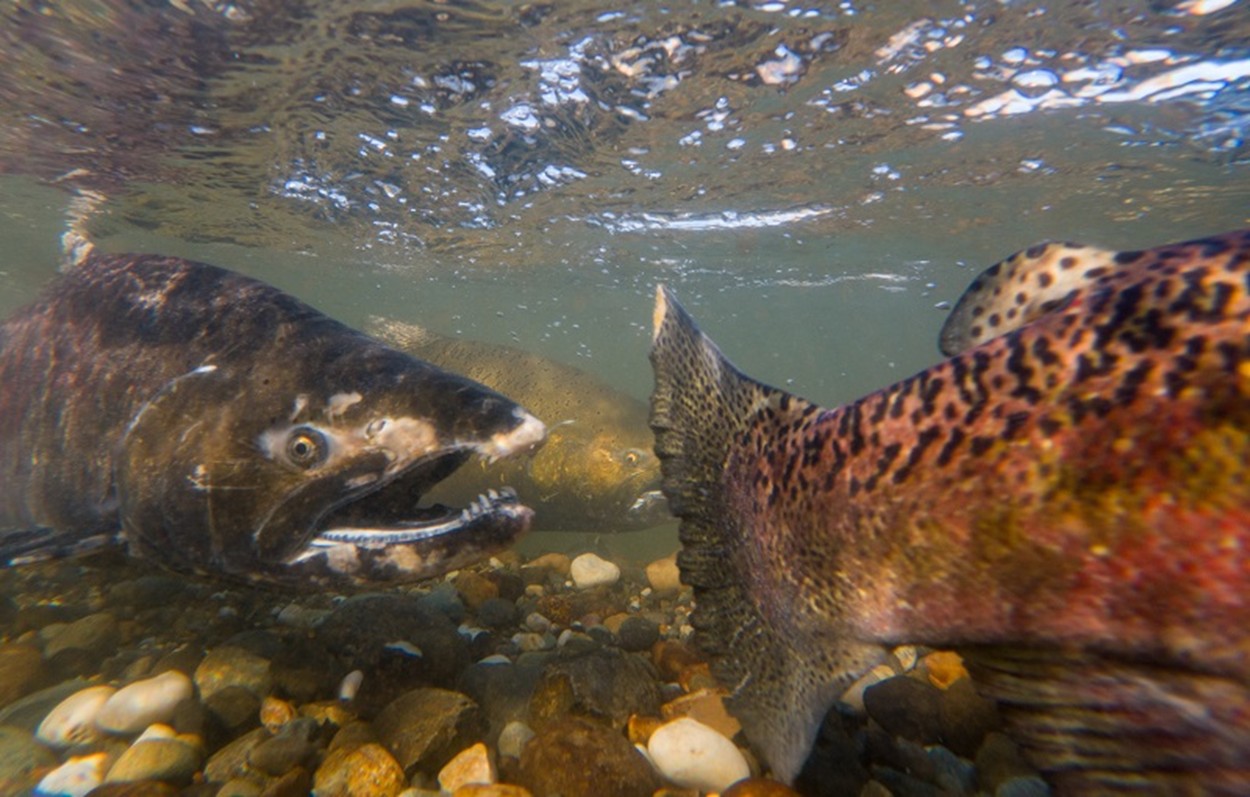
Last week, the Pacific Fishery Management Council voted 13 to 1 to recommend banning all commercial salmon fishing off the California coast. This decision, which the National Marine Fisheries Service is expected to adopt in May, will shut down commercial salmon fishing along California’s coast for the third year in a row, marking the first time that commercial salmon fishing in California has been cancelled for three consecutive years.
In making its decision, the Pacific Fishery Management Council cited current state estimates showing an estimated 166,000 Sacramento River fall-run Chinook salmon in the ocean this year contrasted with last year’s preseason estimate of 214,000. Those numbers represent a stark and alarming drop from just two decades ago when, some years, there was an estimated 1 million salmon along California’s Pacific coast.
While California’s extension of the commercial fishing ban attempts to solve the problem of plummeting salmon populations along the coast, a better solution can be found inland, where poor water management has left rivers dry.
For example, the Shasta River has historically been one of California’s most productive salmon habitats. Poor environmental stewardship, however, has turned a once flourishing habitat into one where salmon can barely survive. During irrigation season, water is diverted out of the Shasta River, dropping flows to extreme lows and making it difficult for salmon populations to survive, let alone recover. Such low flow conditions have devastated salmon populations, leading to last ditch efforts to provide minimal “belly scraping flows” to conserve the low population numbers that remain.
California’s legal status quo brought us here. It’s time it brings us out.
California Coastkeeper Alliance, along with Tribal, fishing, and other environmental organizations, has and continues to persistently advocate for the State Water Board to take significant steps towards regulating flows in these watersheds outside of drought emergency years through non-emergency regulations. On January 17, California Coastkeeper Alliance submitted a petition to the State Water Resources Control Board (State Water Board) to establish permanent instream flow regulations in the Shasta Watershed.
But adopting permanent instream flow regulations takes time – time in which salmon will be left without bare-minimum survival flows. Since 2021, Governor Newsom has proclaimed a drought emergency in the Scott and Shasta Watersheds, giving the State Water Board emergency authority to protect salmon by preventing water users from diverting the rivers dry. These emergency regulations require a small percentage of the rivers’ flow – a percentage determined by California’s Department of Fish and Wildlife and the National Marine Fisheries Service to be the minimum amount of flow necessary to enable salmonids in these rivers to survive – to remain in the river.
While drought emergency regulations provide only the bare minimum amount of flow necessary for salmon survival, in most non-drought years, United States Geological Survey stream data shows that flows in these rivers actually fall below the minimum survival flows required under the drought emergency regulations. Therefore, paradoxically, the emergency regulations allow salmon greater protection in drought years than wet years.
As such, along with the Karuk and Yurok tribes, California Coastkeeper Alliance co-sponsored Assembly Bill 263. AB 263, introduced by Assemblymember Chris Rogers this year, amends the Water Code to protect the two essential salmon nurseries in the Klamath River Watershed – the Scott and Shasta River Watersheds. AB 263 seeks to keep the emergency regulations in place until the State Water Board can adopt more permanent regulations. This will ensure bare minimum flows necessary to give salmon a chance at survival in the interim, regardless of a drought emergency proclamation.
The situation facing California’s salmon is dire. Last week’s unprecedented decision to ban commercial salmon fishing for the third consecutive year should serve as a wake-up call to protect salmon habitat in the Klamath River Watershed before it is too late.
Policy Analyst Marty Farrell advocates for statewide policies and programs that protect the health of California’s water.



